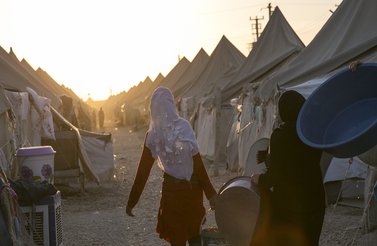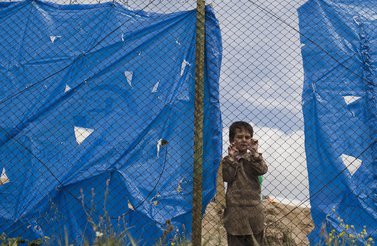In December, diplomats from more than 160 nations met for two days in Morocco to adopt the United Nations’ Global Compact for Safe, Orderly and Regular Migration (GCM), a non-binding agreement that aims to make life a little easier for the unprecedented number of people worldwide who are on the move away from home.
One of the agreement’s signature achievements was to recognize the role that extreme weather and other climate-related disasters can play in prompting displacement and migration. According to the Nansen Initiative, a research collaborative backed by the European Union, between 2008 and 2014 an average of 22.5 million people were displaced every year by natural disasters. Experts expect that number to grow as sea levels rise, droughts last longer and storms worsen. By 2050, the total number of climate-displaced people could grow beyond 200 million — about two percent of the global population. And yet, there remains no legally binding international recognition or protection for climate migrants.
The GCM took the biggest step yet toward solving that problem. It calls on its signatories to “better map, understand, predict and address migration movements, such as those that may result from sudden-onset and slow-onset natural disasters, the adverse effects of climate change, environmental degradation...” The GCM also calls on signatories to “cooperate to identify, develop and strengthen solutions...including by devising planned relocation and visa options” for climate migrants. Its recommendations mirror those put forward in September by a special UN task force on displacement, which was created during the 2015 UN Climate Change Conference in Paris.
Still, there’s a long way to go before any of this language translates to tangible benefits for climate migrants. The GCM has yet to yield substantive regional or national policy changes aimed at climate migrants. The United States, as well as Australia, Israel, Italy, Hungary and other key players in global migration politics, pulled out of the agreement over concerns that it could impede their domestic immigration agendas. In the meantime, as climate displacement escalates, more evidence is accumulating about the complex ways in which climate change interacts with the panoply of other factors that might compel a person to migrate, and what the impacts of this unprecedented surge of human mobility might be.
The stakes of this issue were vividly on display on the southern US border late in 2018, when thousands of Central American migrants joined caravans. A September assessment by US border officials pointed to drought-stricken farms and hunger as the primary driver for those migrants. US President Donald Trump responded by deploying National Guard troops to the border and instigating an unprecedented federal government shutdown over funding for a border wall.
Even with the GCM, climate-displaced people are falling through the cracks.
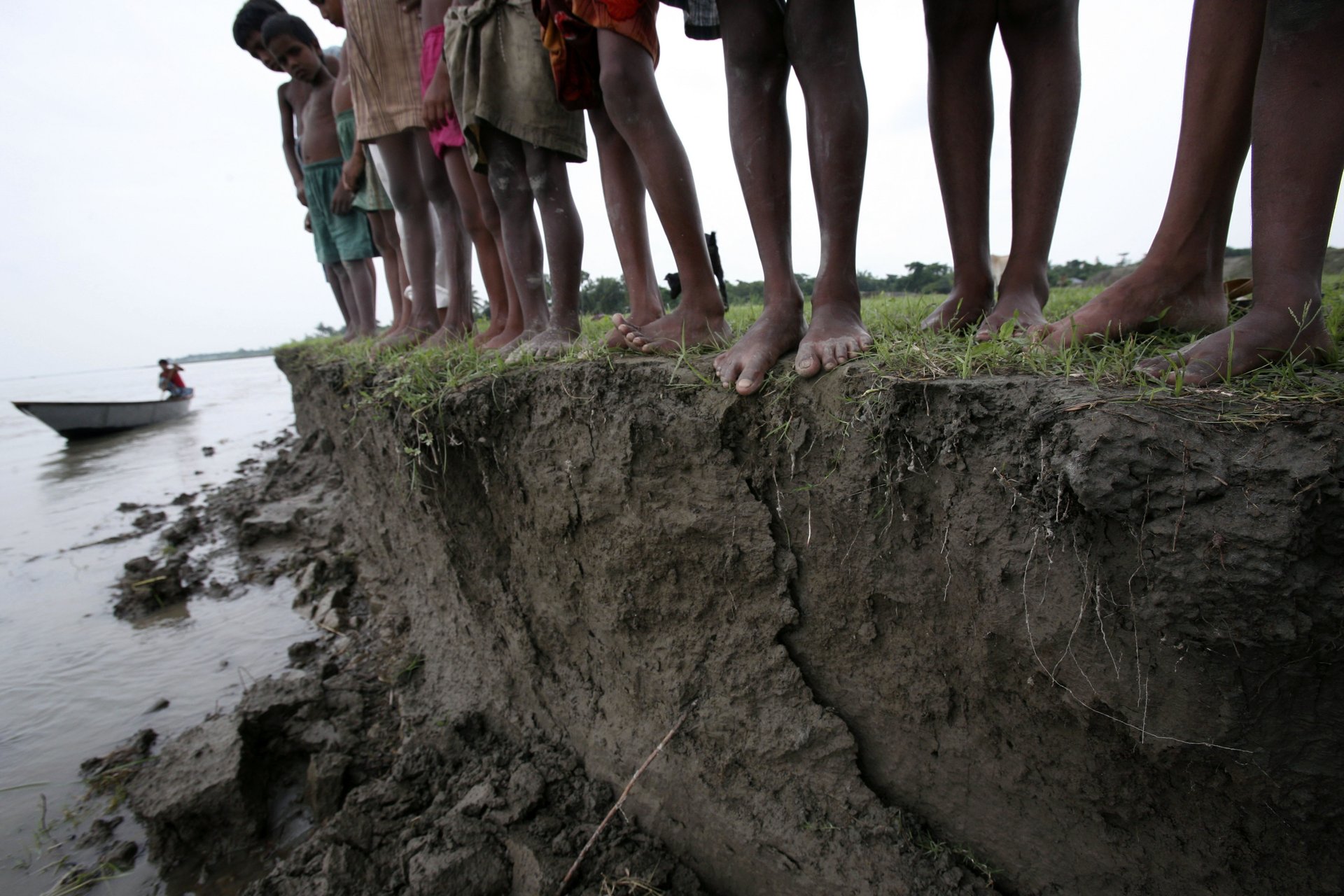
“Safe pathways still need to be created for people who are dealing with the impacts of climate change, so that they’re not making migration decisions only in the context of a specific disaster,” says Sarnata Reynolds, policy advisor for global displacement and migration at Oxfam. “They should be able to make decisions about when and where and how to move.”
A few places in the world offer a preview of the climate-related migration challenges that many countries and cities around the world will confront in the near future. On a recent assignment for National Geographic, I found that Bangladesh, with its low-elevation coast, is one of them.
Riverbank Erosion in Bangladesh
Alamin Hossein Baperi wasn’t at his house when the river washed it away last summer. He was 150 km away, visiting his older sister. Neither had a cellphone. A few days later, returning home to Bhola Island on the southeastern coast, he walked down a serpentine forest path past his neighbours’ fish ponds, stilt houses and ramshackle tea shops.
The path ended where the land did, with an abrupt three-foot drop to the water. Baperi’s house should have been about a dozen metres ahead of him.
“I saw it was all water, and that was how I got the news that we were landless,” he says. “The feeling was inexpressible. I cried and cried.”
Baperi is one of the hundreds of thousands of Bangladeshis who are displaced each year by riverbank erosion. Hydrologists worry that the rate could increase as climate change produces heavier rainfall during the monsoon season and a heavier flow of silt and water (from melting snow and glaciers) in the Himalayan mountains upstream
Bangladesh also faces a multitude of other natural disasters, including flooding, saltwater intrusion into freshwater farming and fishing areas, drought and catastrophic tropical storms. Each has the potential to displace hundreds of thousands more people. As sea levels rise, climate change further disrupts seasonal rainfall patterns and Bangladesh’s population grows, those numbers will grow. By 2050, the number of Bangladeshis displaced by climate impacts will have reached 13.3 million, according to a 2018 World Bank report.
In Bangladesh, the line is blurring between disaster refugees displaced by a specific catastrophe and economic migrants moving to improve their income prospects. Many displaced people were subsistence farmers and fishers who had moved from vulnerable coastal areas to slums in Dhaka, where they worked in the informal sector as rickshaw drivers, day labourers and domestic servants. At home, they were often affected by more than one form of climate-related natural disaster, which compounded their socio-economic marginalization. For some people, Cyclone Aila, which hit in 2009, was the direct cause of their displacement; for others, the devastation triggered long-lasting economic hardship, later exacerbated by slow-moving climate changes, such as salinity intrusion. Life choices were closed off one by one, until migration was the only path forward.
“What climate change does is it makes your traditional livelihood obsolete,” says Ashfaq Rahman Khan, an environmental migration expert at the International Organization for Migration in Dhaka.
In Baperi’s case, the morning after he lost his house, and desperate for a little cash and something to eat, he and his father borrowed a boat and went fishing using an illegal drag net. They were caught by the police and jailed for three months, he told me. After their release, with no house, no land, no fishing gear and no way to earn a living, Baperi decided to take his chances in Dhaka, one of the world’s fastest-growing and most densely populated megacities.
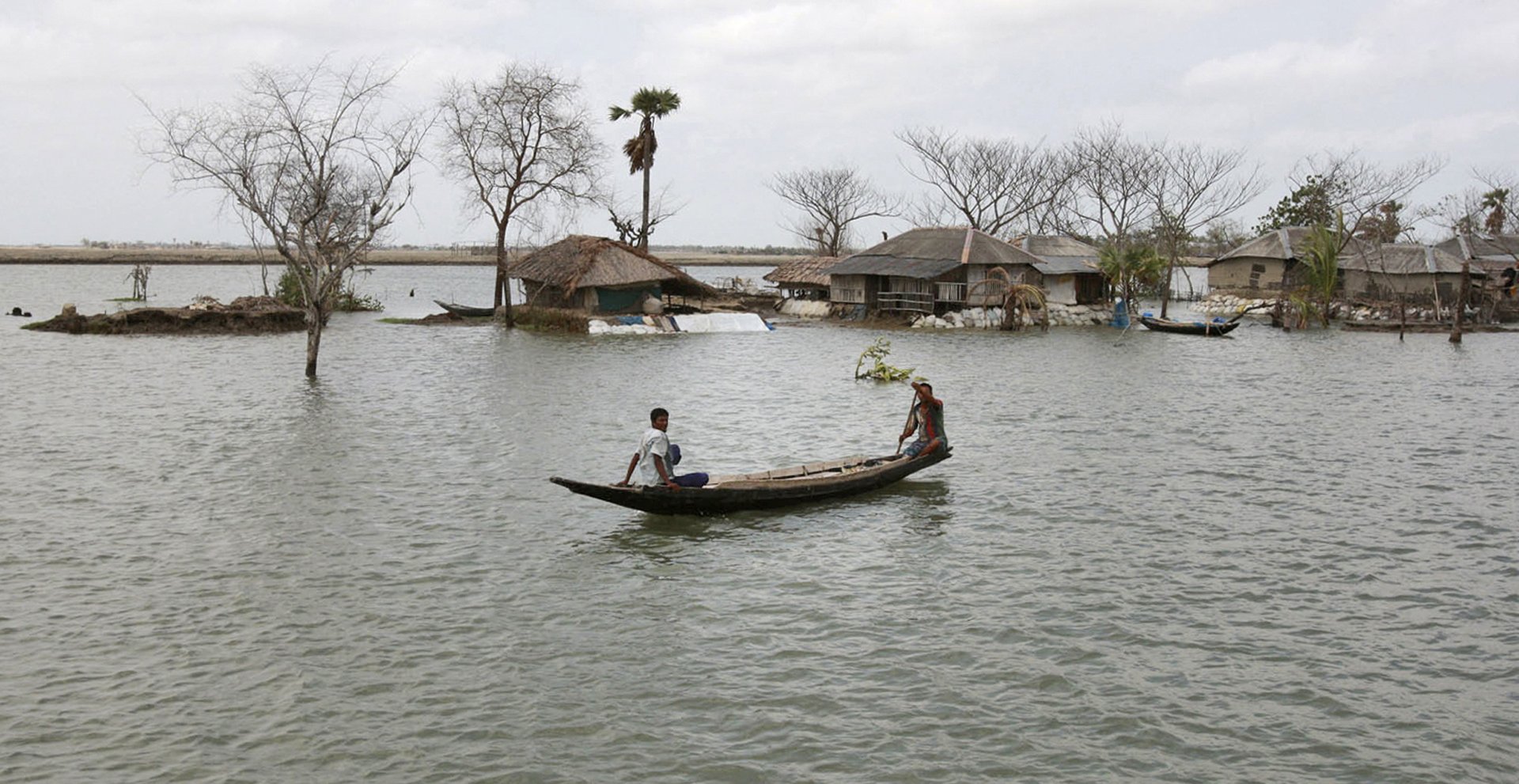
In Bangladesh, the increasing climate pressure on rural areas is fuelling a secondary crisis of helter-skelter urbanization, illustrating a trend Robert Muggah and Adriana Erthal Abdenur noted in their 2018 paper. Many displaced people around the world, they write, “end up living in lower-income informal settlements. As a result, they are often recipients of uneven access to basic services and face challenges entering the formal and informal labour markets.”
In Dhaka, Baperi lives with his wife, Ayesha, in a slum behind a construction site, in a makeshift aluminum room on short stilts. They share a toilet and stove with several neighbours, and when it rains the narrow alleyways flood. Around 40 percent of the city’s residents live in slums like this, where they face a number of challenges, including poor sanitation and public health, scant access to basic utility services, human trafficking and sexual violence, exploitative rent and frequent eviction. Barisal, the province in Bangladesh that includes Baperi’s home of Bhola Island, is home to only six percent of the national population, but former residents of Barisal make up 20 percent of the slum dwellers in Dhaka, according to a 2016 UN analysis.
As I wrote for National Geographic, it seems that urban planning policy has not caught up to the realities of climate-induced displacement:
Local officials still tend to view slum dwellers as illegal squatters, rather than residents with a right to basic services. Tariq bin Yousuf, a senior official at the Dhaka City Corporation, a government agency that manages the city’s infrastructure, says that while the city has plans to build more affordable housing, it prefers to leave slum residents reliant on aid from local and international non-governmental organizations. “If we invest money directly in slum areas, or give them an electricity supply, they will start to think, ‘O.K., we have these facilities, so we have the ownership of this land,’” he says. “Once we give them improved services, they become permanent.”
Instead, Bangladesh has taken steps to get at the root of the problem, as encouraged by the GCM: investing in climate adaptation measures in the most vulnerable areas, to mitigate mass migration altogether. In September, the government approved a long-range, US$40 billion flood management plan. Another program, carried out since the early 2000s, has helped around 30,000 families who lost their homes to floods and erosion to develop new communities on coastal land recently formed by silt deposition. Some of these efforts were supported by foreign aid agencies: over the last six years, the US Agency for International Development spent US$33 million on disaster resilience programs in Bangladesh, and the country’s flood plan is being designed and implemented by the Netherlands.
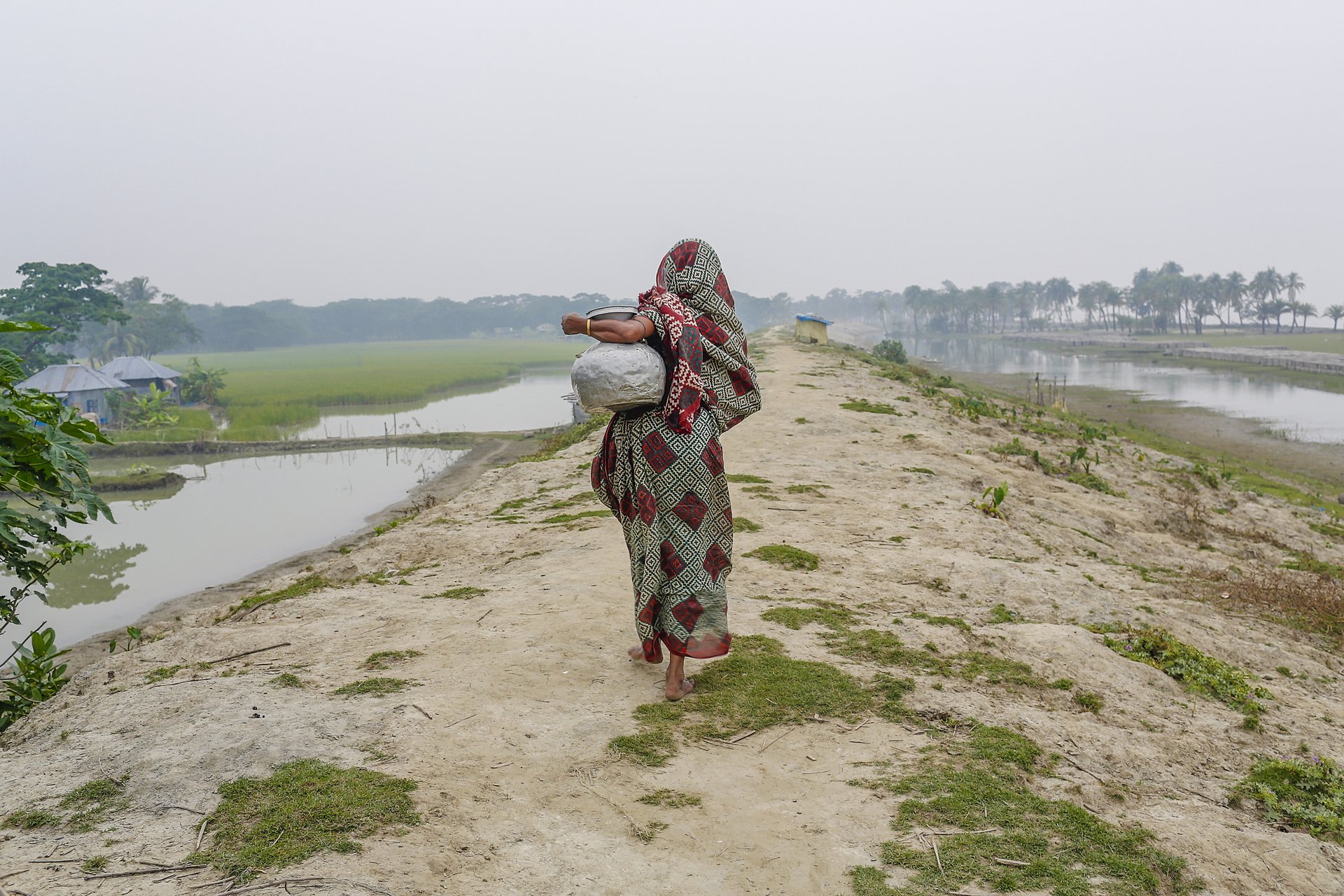
Alice Thomas, the Climate Displacement Program manager at Refugees International, says it’s heartening to see countries like Bangladesh get more serious about addressing the causes of migration. But in situ adaptation has its limits. Inevitably, climate change is going to make it impossible for millions of people to stay in their homes. For some, their homes may no longer exist at all: Pacific Island nations, such as Kiribati and Tuvalu, are facing an existential threat from sea-level rise. In those cases, migration may itself be a necessary, useful adaptation to climate change. However, even with the GCM, there’s no legal precedent to guide how that could play out.
“It’s not just about doing adaptation and resilience, but talking about legal pathways for people from the countries worst affected by climate change,” Thomas says. “And that’s the piece that’s still missing.”
“If You Make It Safe and Legal, It Stops Being a Crisis”
Is the GCM toothless? That depends on how countries use it, Thomas says. The real test of the agreement’s effectiveness over the coming year will be the extent to which countries develop bilateral and regional agreements based on its recommendations, to facilitate the cross-border movement of climate migrants. That effort is moving slowly.
“It’s disappointing more countries don’t see the need to work together on this,” Thomas says. “For now, [the GCM] says ‘enhance’ migration pathways. They didn’t even commit to ‘increase.’ So there’s no promise of climate visas or anything like that. We’re not there yet.”
As the situation at the United States-Mexico border illustrated, the biggest obstacle to improved protection for climate migrants may be the surge of nationalism that has tilted many countries’ domestic politics away from not only anything pro-migrant and any kind of binding international deal, but also from the politically divisive issue of climate change.
“There’s no real opportunity to make major progress,” says Nina Hall, assistant professor of international relations at Johns Hopkins School of Advanced International Studies.
Still, the GCM can be a tool leveraged by civil society to advocate for domestic migration policy reform, says Alex Randall, director of the Climate Change and Migration Coalition. It could also be used to prod governments to review whether their foreign policy and aid programs are improving or worsening climate-induced displacement. A January report by the US Government Accountability Office found that American foreign aid programs have largely overlooked the problem.
“We’ve been handed something that we can deploy persuasively,” Randall says. “You can say to other states, ‘You signed up to this agreement in which you agree that climate change is a driver of migration.’ And that starts to commit you to certain things like how you deploy your aid and development spending.”
Still, whatever happens with migration policy, the root cause of climate change is certain to get worse. A recent projection from the United Kingdom’s Met Office found that global greenhouse gas emissions are likely to break another record in 2019, driven particularly by increased deforestation in the Brazilian Amazon. The October special report from the Intergovernmental Panel on Climate Change painted a vivid picture of the catastrophes that lie ahead, and how unlikely we are to avert them.
Given that global warming is going to continue for the foreseeable future, climate-induced displacement isn’t going to slow down. But policy makers have an opportunity to prevent it from leading to conflict and human rights abuses, Randall says.
“Huge numbers of people moving is perfectly possible,” he says. “It’s their legal status that determines whether that episode of movement looks like a crisis or not. If you make it safe and legal, it stops being a crisis.”
